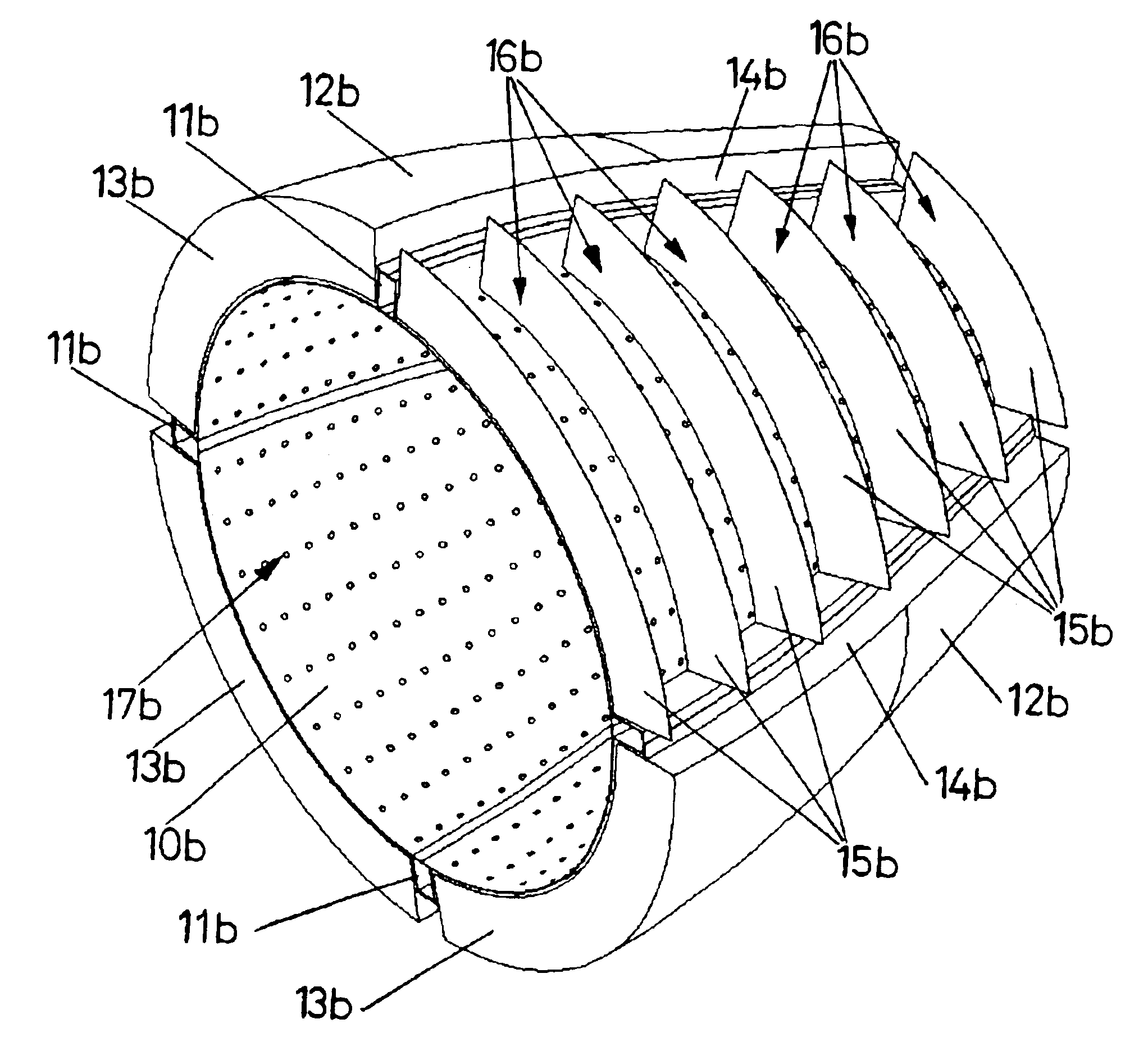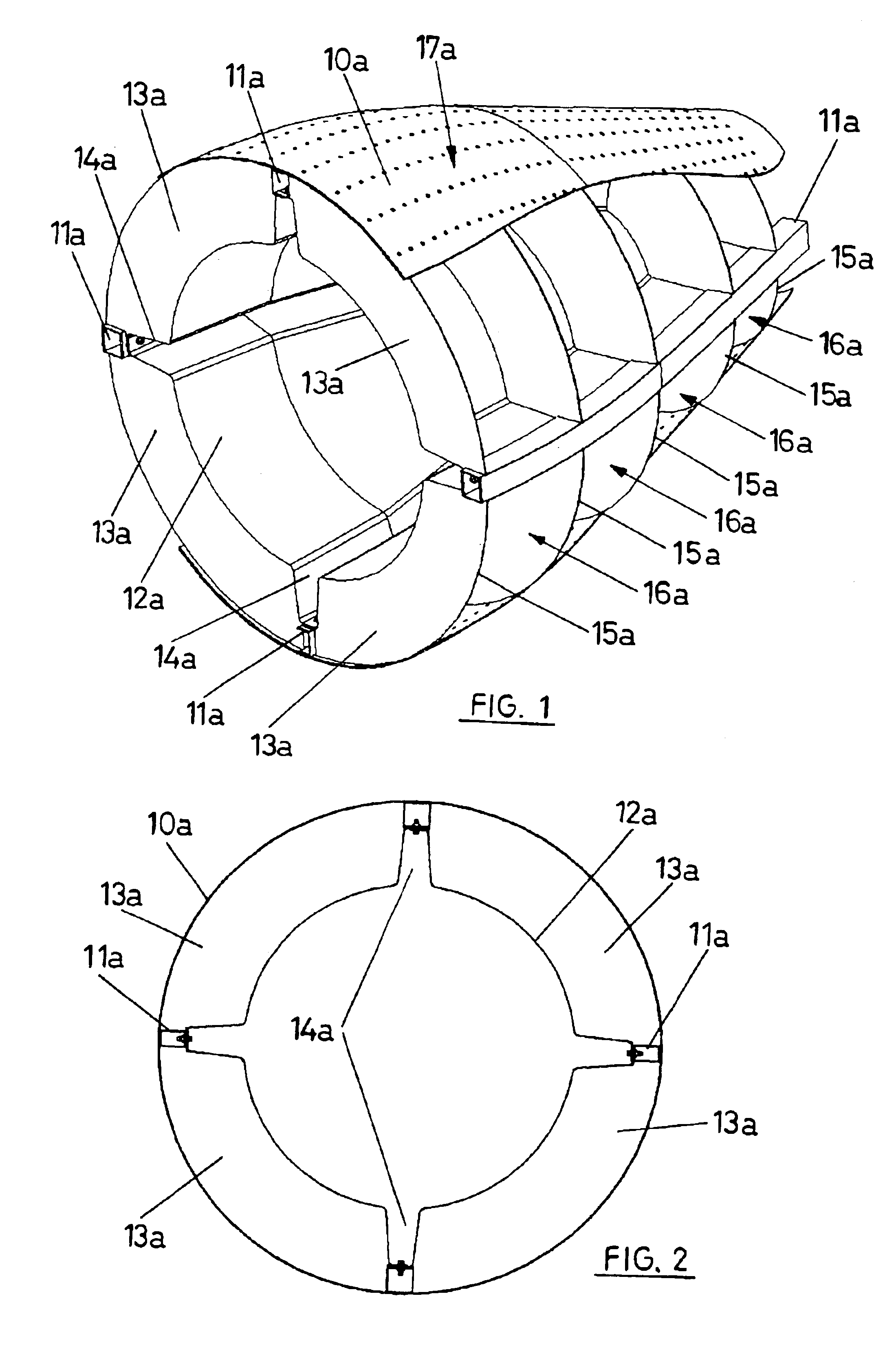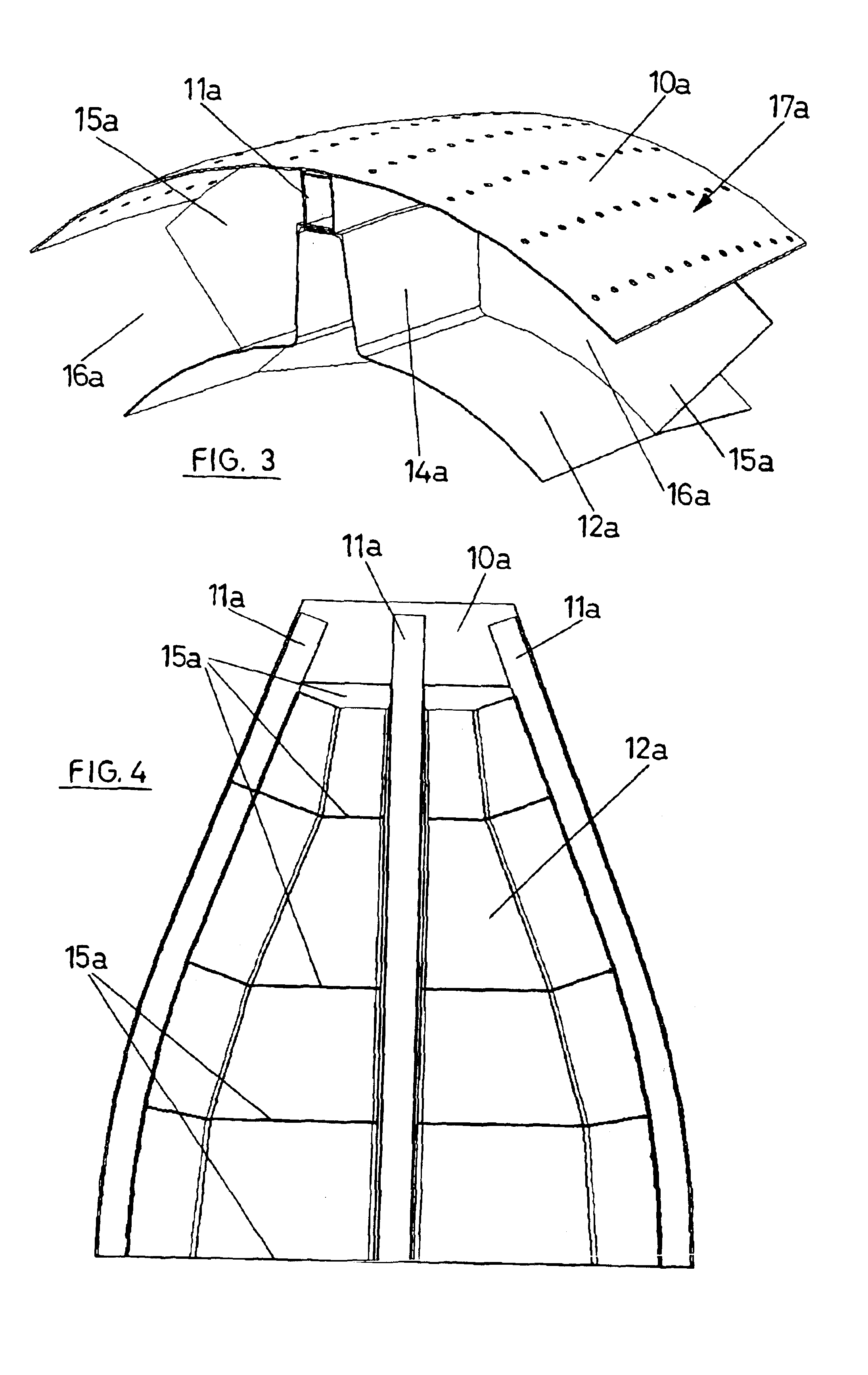Noise reduction conduit for static components in aircraft engines
a static component and conduit technology, applied in the field of noise reduction structures, can solve the problems of high noise levels and world concerns, and achieve the effect of reducing the thickness of the walls of the walls with the lightest structural solution
- Summary
- Abstract
- Description
- Claims
- Application Information
AI Technical Summary
Benefits of technology
Problems solved by technology
Method used
Image
Examples
Embodiment Construction
[0043]FIG. 1 shows a perspective view of an annular cone structure usually located in the exhaust area of a gas turbine engine. For improved clarity the flange where the structure is attached to the rest of the engine has been omitted, as well as the end part of the cone that has no interest from the noise reduction point of view.
[0044]The noise reduction conduit includes an outer wall, or aerodynamically wet wall, 10a that follows an aerodynamic profile defined by the aerodynamic requirements imposed by the engine.
[0045]This outer wall is perforated with a density and size of holes 17a defined according to the acoustic requirements of the specific application.
[0046]The outer wall is completed with a series of intermediate resistant elements or stiffeners 11a that are disposed in the axial direction.
[0047]The outer wall 10a will be secured to the stiffeners 11a through a mechanical joint using screws and nuts or rivets. Other joining methods can be used too, as welding, brazing or b...
PUM
| Property | Measurement | Unit |
|---|---|---|
| Temperature | aaaaa | aaaaa |
| Weight | aaaaa | aaaaa |
| Structure | aaaaa | aaaaa |
Abstract
Description
Claims
Application Information
 Login to View More
Login to View More - R&D
- Intellectual Property
- Life Sciences
- Materials
- Tech Scout
- Unparalleled Data Quality
- Higher Quality Content
- 60% Fewer Hallucinations
Browse by: Latest US Patents, China's latest patents, Technical Efficacy Thesaurus, Application Domain, Technology Topic, Popular Technical Reports.
© 2025 PatSnap. All rights reserved.Legal|Privacy policy|Modern Slavery Act Transparency Statement|Sitemap|About US| Contact US: help@patsnap.com



